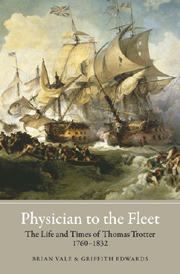1 - The Edinburgh Experience
from Background
Published online by Cambridge University Press: 12 September 2012
Summary
Family and origins
THE NAME ‘Trotter’ is widespread in the border counties of Scotland and in Northumberland and Durham. The family's origins are lost in the mists of mediaeval Scots history, and its emergence was not helped by being on the losing side in many local conflicts. One branch was wiped out at the Battle of Flodden; another suffered the fate of the Covenanters and the marquis of Montrose; a third threw in its lot with Bonny Prince Charlie. Fortunately, however, most Trotters accepted the Hanoverian succession and shared in the prosperity of Georgian Britain. By the middle of the eighteenth century, the family was well established across the border, some becoming influential as landowners and local magnates. There were the Trotters of Morganhall, who had grown rich as Edinburgh merchants and had now become respectable by achieving high office in the state and the army; and the Trotters of Bush, one of whom – Robert – had enough political weight to become post master general of Scotland and have portraits of himself and his wife painted by George Romney. There were also Trotters of Dreghorn, of Cutchelraw and of Prentannan; and, in England, Trotters of Blythe and of Stockton. In addition to providing local worthies, the family was remarkable in producing large numbers of divines and doctors, many with a literary bent and an interest in poetry, history and antiquities.
- Type
- Chapter
- Information
- Physician to the FleetThe Life and Times of Thomas Trotter, 1760–1832, pp. 3 - 18Publisher: Boydell & BrewerPrint publication year: 2011

